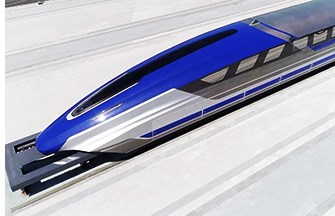China Readies 375-mph “Maglev” Train
China Railway Rolling Stock Corp. aims to begin production in 2021 of a magnetic levitation train system capable of speeds as high as 600 kph (373 mph).
#workforcedevelopment
China Railway Rolling Stock Corp. aims to begin production in 2021 of a magnetic levitation train system capable of speeds as high as 600 kph (373 mph). A prototype train was unveiled this month.
The state-run company estimates such a system could reduce travel time, including parking, boarding, waiting and other preparations, from Beijing to Shanghai to 3.5 hours. This compares with 4.5 hours when traveling by plane and 5.5 hours for current high-speed (220-mph) trains.

Maglev uses magnetic repulsion to lift a train up and to propel it forward on a thin cushion of air. The system virtually eliminates friction, thereby enabling super-fast speeds.
China has been operating a maglev train from the Shanghai airport to the city’s business district for several years. That train hits 267 mph during the 19-mile trip.
Japan also is testing maglev trains. But commercial service isn’t expected to start until 2027 with a route between Tokyo and Osaka. Japan also is working on faster conventional rail trains, which currently top out at about 200 mph. Next-generation models are expected to increase this to nearly 250 mph.
So-called hyperloop systems team maglev technology with pressurized passenger cabins that could raise operating speeds to 700 mph or more. Several companies are developing hyperloop technology, which was proposed by Tesla CEO Elon Musk in 2013.
RELATED CONTENT
-
GM Develops a New Electrical Platform
GM engineers create a better electrical architecture that can handle the ever-increasing needs of vehicle systems
-
Cobots: 14 Things You Need to Know
What jobs do cobots do well? How is a cobot programmed? What’s the ROI? We asked these questions and more to four of the leading suppliers of cobots.
-
Plastics: The Tortoise and the Hare
Plastic may not be in the news as much as some automotive materials these days, but its gram-by-gram assimilation could accelerate dramatically.








